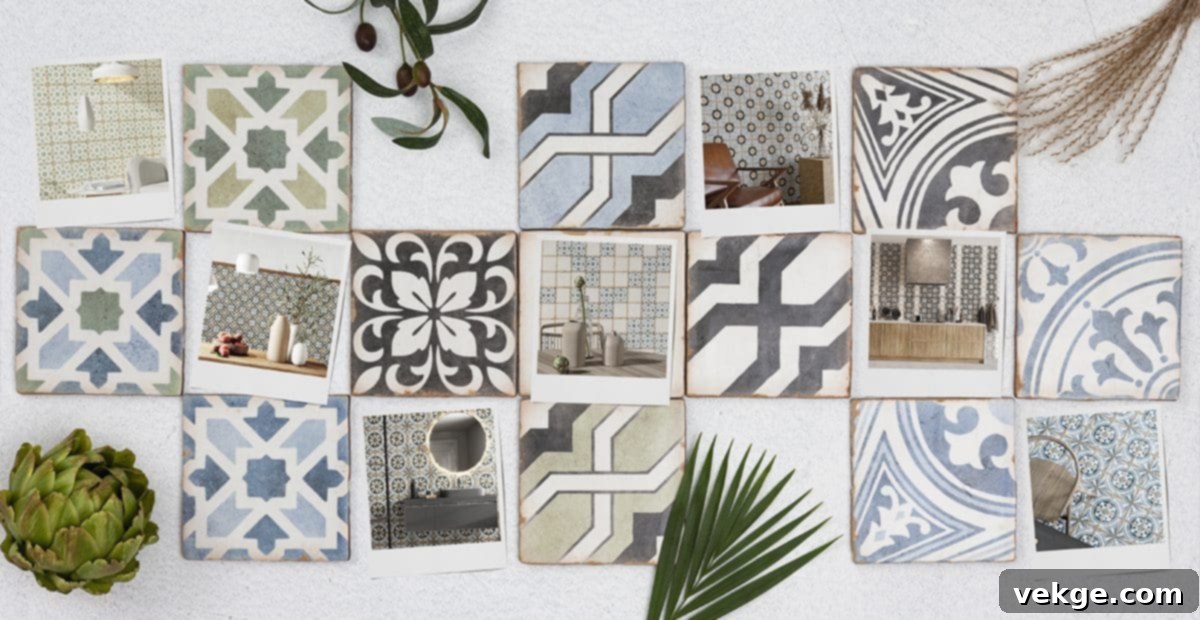Discover the Timeless Elegance and Versatility of Blue Hand-Painted Tiles in Interior Design
In the realm of interior design, few elements hold as much power to define the character and ambiance of a space as tiles. They are not merely functional surfaces but canvases that reflect personal style and historical narratives. While the market offers a myriad of tiling options, blue hand-painted tiles stand out as exceptionally unique, infusing any environment with an unparalleled sense of royalty, charm, and artistic flair.
These exquisite tiles are celebrated for their enduring beauty and intricate designs, harmoniously integrating with various interior elements to create captivating visual statements. From the classic allure of French Country Tiles to the geometric sophistication of Medina tiles and the serene patterns of Oasis tiles, the variety is vast. Each piece tells a story, making blue hand-painted tiles more than just a decorative choice; they are a work of art that elevates the entire living experience.
Join us on an in-depth exploration of blue hand-painted tiles, where we will uncover their rich history, delve into the artisanal techniques that make them unique, highlight their incredible versatility in design, and provide a comprehensive guide to selecting the perfect tiles to transform your home into a masterpiece of personalized elegance.
The Enduring Legacy: A Brief History of Blue Hand-Painted Tiles
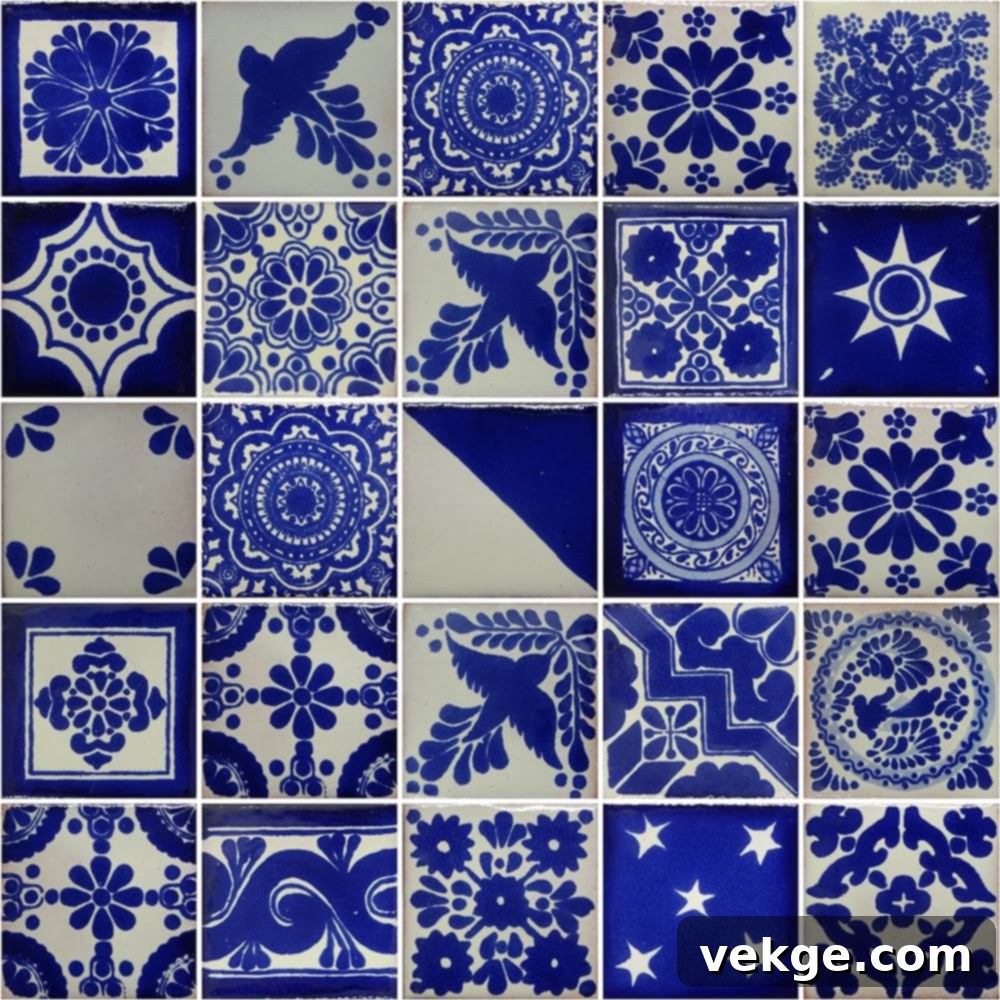
The allure of blue hand-painted tiles is not a recent phenomenon; it is deeply rooted in the artistic traditions of diverse cultures and ancient civilizations across the globe. Their history is a tapestry woven with threads of innovation, symbolism, and cultural exchange.
One of the most celebrated origins of blue and white ceramic tradition traces back to ancient China. During the illustrious Ming and Qing Dynasties, Chinese artisans perfected the art of producing breathtaking blue and white porcelain, adorned with incredibly intricate hand-painted designs. These designs often depicted mythical creatures, serene landscapes, and auspicious floral motifs. Beyond their aesthetic appeal, these pieces held profound symbolic significance, often representing purity, prosperity, and the harmonious balance of nature. The cobalt blue pigment, initially imported, became a hallmark of imperial taste and artistic mastery.
Similarly, the use of blue in hand-painted tiles gained immense prominence in Islamic art and architecture. From the dazzling mosques and palaces of the Ottoman Empire to the intricate courtyards of Moorish Spain and the vibrant religious sites in Persia, blue tiles became synonymous with spiritual depth and earthly beauty. Styles like Iznik tiles from Turkey, with their rich cobalt and turquoise hues, and the precise geometric patterns of Moroccan Zellige, exemplify this tradition. These complex designs were not merely decorative; they often conveyed cultural and religious messages, invoking a sense of divinity and infinite beauty through their mesmerizing repetitions and calligraphic elements.
Europe also embraced the charm of blue hand-painted tiles, most notably in the Netherlands with Delftware and in Portugal and Spain with Azulejos. Dutch Delft tiles, introduced in the 17th century, became a symbol of national identity, often featuring pastoral scenes, biblical stories, or intricate floral patterns, usually in a distinctive blue on a white background. Portuguese Azulejos, influenced by Moorish traditions, evolved into a unique art form, covering entire facades and interiors with narrative scenes, geometric patterns, and vibrant blue landscapes, telling tales of exploration and daily life. These diverse historical threads underscore the universal and enduring appeal of blue hand-painted tiles.
Unveiling the Unique Features of Blue Hand-Painted Tiles
1. Artistry and Techniques: The Soul of Each Tile
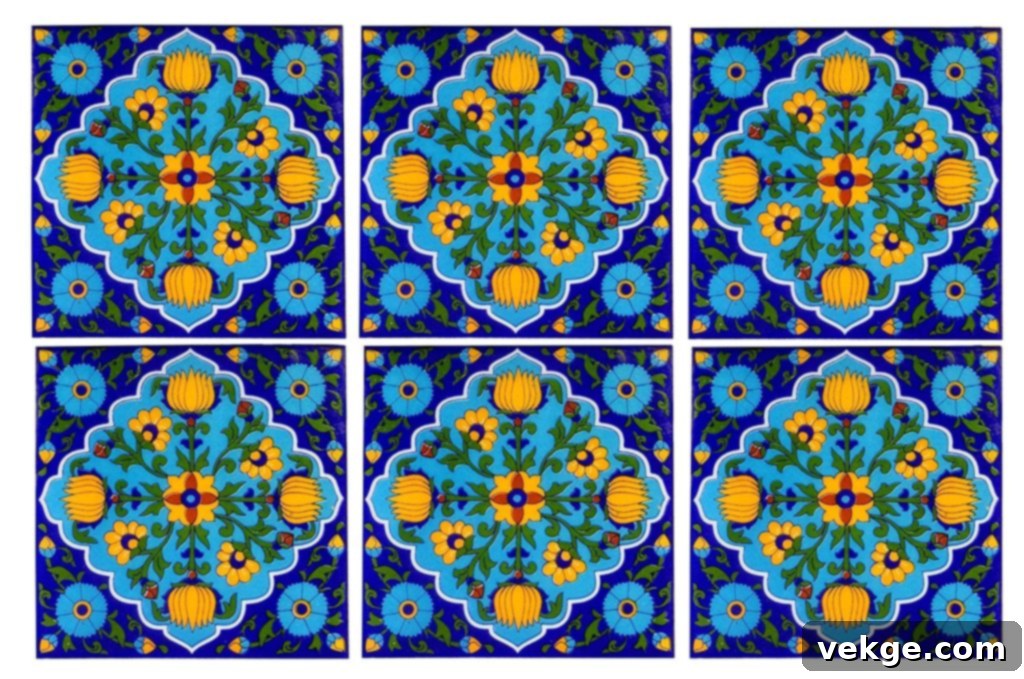
What truly distinguishes blue hand-painted tiles from their mass-produced counterparts is the exceptional artistry and the intricate crafting techniques employed by skilled artisans. Each tile is a testament to human creativity, precision, and dedication, resulting in a unique piece of functional art.
The journey of a hand-painted tile begins with the careful selection of high-quality clay. This clay is then expertly molded, often by hand, into the desired shape and size. Following the shaping, the tiles undergo a crucial initial firing process, known as bisque firing, which hardens the clay and prepares it for decoration. This stage ensures the tile has the right texture and durability even before the artistry begins.
The true magic unfolds during the painting process. Artisans, often using techniques passed down through generations, apply pigments with a steady hand and acute attention to detail. Cobalt oxide is typically the source of the iconic blue hue, but the precise shade and intensity can be meticulously controlled and combined with other colors to achieve a vast spectrum of designs. Whether it’s the freehand brushstrokes characteristic of Delftware or the meticulous stenciling and majolica techniques seen in Talavera tiles, the artisan’s understanding of color theory and historical patterns is paramount.
After the intricate designs are painstakingly applied, the tiles are coated with a glaze and subjected to a second, higher-temperature firing. This final firing process is critical; it vitrifies the clay, fuses the glaze, and permanently seals the hand-painted colors, ensuring exceptional durability, resistance to wear, and vibrant, long-lasting hues. The subtle variations in color, the nuanced brush strokes, and even the minor imperfections inherent in handmade items are not flaws but unique characteristics that imbue each tile with a distinct soul and charm that machine-made tiles simply cannot replicate.
2. Design and Versatility: A Kaleidoscope of Possibilities
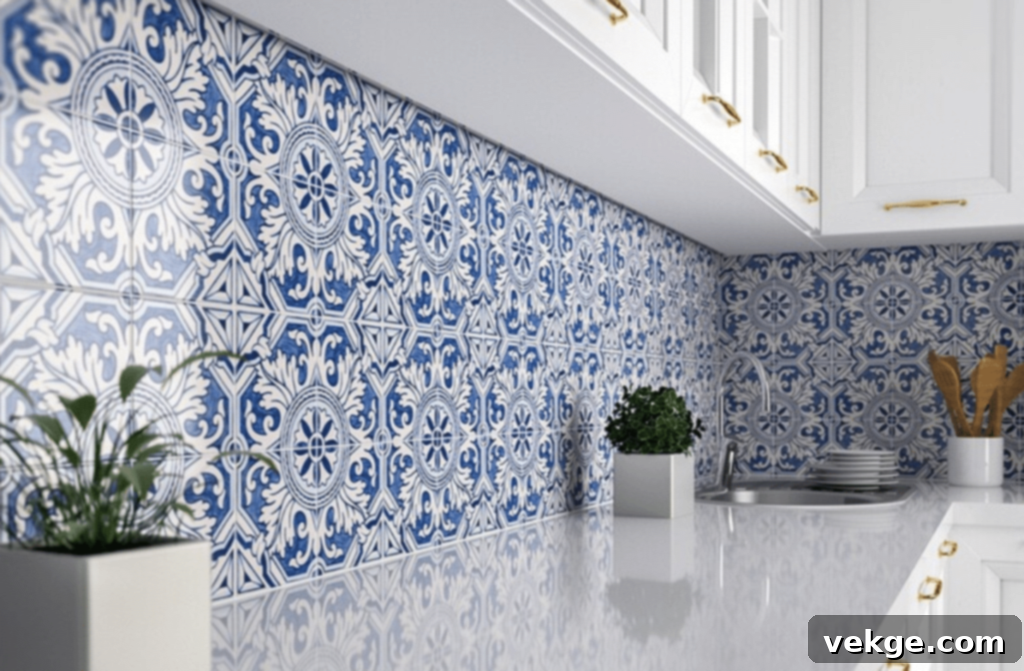
The design possibilities and inherent versatility of blue hand-painted tiles are truly limitless, allowing them to be seamlessly incorporated into virtually any interior design scheme. Whether you seek to evoke timeless tradition or embrace cutting-edge modernity, these tiles offer a unique aesthetic solution.
The spectrum of designs ranges from intricate, culturally significant patterns inspired by ancient motifs to bold, contemporary, and abstract compositions. This incredible breadth means that blue hand-painted tiles can serve multiple roles within a space. They can be the dramatic focal point of a kitchen backsplash, transforming a functional area into an artistic statement. In bathrooms, they can amplify a spa-like serenity on walls or add a playful touch to floor designs. Beyond these common applications, consider them for fireplace surrounds, accent walls in a living room, decorative stair risers, or even as captivating tabletops in outdoor living areas. Their ability to introduce an elegant and unique touch to any space is undeniable.
One of the most captivating aspects of these tiles is the narrative they carry. Many designs are imbued with cultural or historical meaning, turning each tile into a conversation starter and a window into a bygone era. For instance, you might find tiles featuring lush floral motifs reminiscent of ancient Persian gardens, or scenes depicting seafaring adventures akin to traditional Portuguese Azulejos. Geometric patterns, often found in Islamic tile art, can symbolize mathematical precision and spiritual contemplation. This inherent storytelling quality gives these tiles a profound depth that transcends mere decoration, making them not just beautiful but also intellectually stimulating.
Furthermore, the various shades of blue — from deep navy and vibrant cobalt to serene sky blue and lively turquoise — provide an extensive palette that complements a wide array of existing decor. Blue hand-painted tiles can harmonize with natural wood tones, industrial metals, rustic stone, and sleek modern finishes, proving their adaptability across diverse design aesthetics.
3. Eternal Appeal: Beyond Trends and Seasons
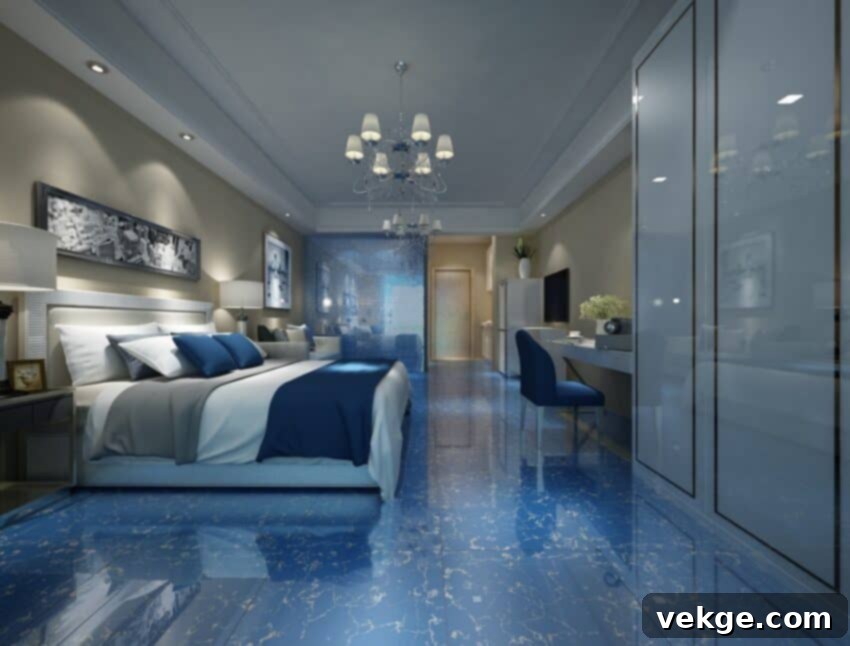
Perhaps the most compelling reason for the enduring popularity of blue hand-painted tiles is their ‘eternal appeal’ – a beauty that transcends fleeting trends and never ages. In a world where interior design fads come and go, these tiles possess a timeless quality that allows them to remain relevant and cherished decade after decade.
While many contemporary designs inevitably fade out of style, blue hand-painted tiles are celebrated for their ability to effortlessly bridge the gap between traditional charm and modern aesthetics. Their inherent classicism ensures they blend seamlessly into any corner of a space, adapting gracefully to match diverse interior themes. Whether your home leans towards rustic farmhouse, minimalist urban, opulent traditional, or eclectic bohemian, these tiles integrate harmoniously, enhancing rather than clashing with the existing decor.
Furthermore, the handcrafted nature of these tiles contributes significantly to their eternal allure. Each piece is truly one-of-a-kind, bearing the subtle marks of the artisan’s hand. The minute variations in color saturation, the delicate nuances of brush strokes, and the charming imperfections all converge to add a profound depth and character that cannot be replicated by mass-produced alternatives. This uniqueness bestows a distinct personality upon the space, making it feel more authentic, inviting, and truly bespoke.
Beyond aesthetics, their durability, forged through high-temperature firing, means they are built to last, maintaining their vibrant beauty for generations. This longevity, combined with their unwavering style, makes them a wise and lasting investment in your home’s design. They don’t just decorate a space; they imbue it with a sense of history, artistry, and enduring elegance.
Your Guide to Choosing the Best Blue Hand-Painted Tiles
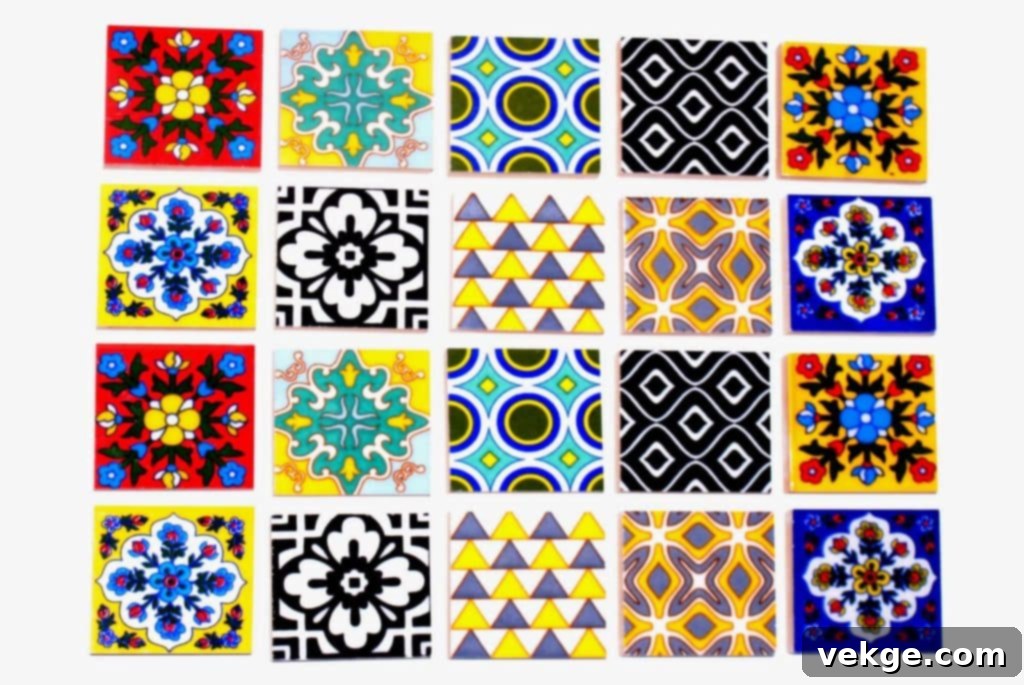
Selecting the perfect blue hand-painted tiles involves more than just admiring their beauty; it requires thoughtful consideration to ensure they complement your space and truly reflect your personal taste. Here are several key factors to consider when making your choice:
- Define Your Desired Style: Before diving into specific designs, determine the overarching style you wish to achieve in your space. Are you aiming for a classic, opulent look with intricate traditional patterns (e.g., historical floral or geometric motifs)? Or perhaps a sleek, modern aesthetic with abstract or minimalist blue designs? For a rustic vibe, uneven textures and simple patterns might be ideal. If you lean towards eclectic, consider mixing different blue tile patterns for a unique visual tapestry. Ensure your chosen tiles harmonize with your existing decor or set the tone for a new design direction.
- Choose the Perfect Shade of Blue: Blue is a remarkably diverse color, ranging from the deep, calming intensity of navy and cobalt to the bright, airy feel of sky blue and the vibrant warmth of turquoise. Each shade evokes a different mood. Navy can offer sophistication and depth, while sky blue brings a sense of serenity and openness. Consider the room’s natural light, its purpose, and the existing color scheme. Do you want the tiles to match or provide a striking contrast? It’s highly recommended to obtain samples and observe them in your space under different lighting conditions.
- Understand Tile Material and Durability: Hand-painted tiles are crafted from various materials, each possessing distinct characteristics that impact their suitability for different applications and maintenance requirements.
- Ceramic Tiles: A common and versatile choice, ceramic tiles are generally more porous and best suited for walls or light-traffic floor areas. They are usually more affordable and offer a vast range of design possibilities.
- Porcelain Tiles: Known for their superior durability and low porosity, porcelain tiles are ideal for high-traffic floors, outdoor areas, and wet environments like showers. They are often frost-resistant, making them suitable for exterior use.
- Cement Tiles: These offer a unique matte finish and a distinct, rustic appeal. They are quite porous and require sealing to prevent staining and ensure longevity, making them suitable for both floors and walls in various settings.
Evaluate the specific needs of your project – will the tiles be exposed to moisture, heavy foot traffic, or extreme temperatures?
- Consider Size, Shape, and Pattern Complexity: The size and shape of the tiles, along with the complexity of their hand-painted patterns, can dramatically alter the perception of a space. Large format tiles can make a small room feel expansive, while smaller, intricate tiles can add texture and detail. Explore common shapes like squares, rectangles, hexagons, or even more unique forms like fish scales. Think about whether you prefer a simple, repetitive pattern that creates a soothing backdrop or a bold, statement design that draws the eye. The complexity of the pattern should also align with the overall scale and busyness of your interior.
- Budget and Sourcing: Hand-painted tiles, by virtue of their artisanal nature, often command a higher price point than machine-made options. Establish a realistic budget and be prepared for variations based on material, complexity of design, and the artisan’s reputation. Research reputable suppliers and artisans who specialize in quality hand-painted tiles. Ask about their process, materials, and any certifications. Investing in well-made tiles ensures both beauty and longevity.
- Maintenance Requirements: Different tile materials and finishes require varying levels of care. Ceramic and porcelain tiles are generally easy to clean, but cement tiles, for example, need regular sealing to protect their porous surface. Understand the maintenance commitment before purchasing to ensure your chosen tiles remain beautiful for years to come without excessive effort.
Conclusion
In summary, blue hand-painted tiles represent one of the most unique, timeless, and impactful choices for interior decoration. They are far more than just surface coverings; they are cultural artifacts, artistic expressions, and durable investments that infuse a space with character and warmth.
Whether your aim is to celebrate the rich cultural heritage embedded within their historical designs, to add a bespoke aesthetic appeal that reflects your personal journey, or simply to create a striking focal point, there is no denying the irresistible charm of blue hand-painted tiles. Their beauty transcends fleeting trends and seasons, proving their enduring value in any home.
From the tranquil ambiance they create in washrooms and bedrooms to the vibrant energy they bring to kitchens and living rooms, blue hand-painted tiles truly work wonders in any space. So, embark on a journey of discovery, explore the boundless versatility of these beautifully hand-crafted pieces, and elevate the interiors of your space with a touch of timeless artistry today!
